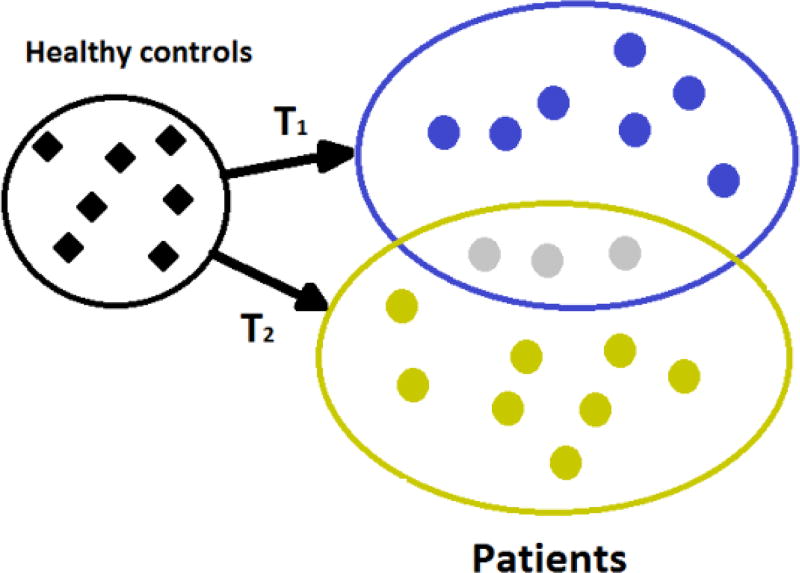Figure 1.
CHIMERA analyzes a heterogeneous population of patients by determining an optimal set of transformations generating their brains by transforming relevant neuroanatomical characteristics of healthy subjects matched for age, sex and other covariates. These transformations are interpreted as the effects of different disease subtypes on the brain, in our case effects of the disease on regional volumes of GM, WM, and CSF. We illustrate here two disease subtypes T1 and T2. The patients in gray display a combination of both subtypes.

